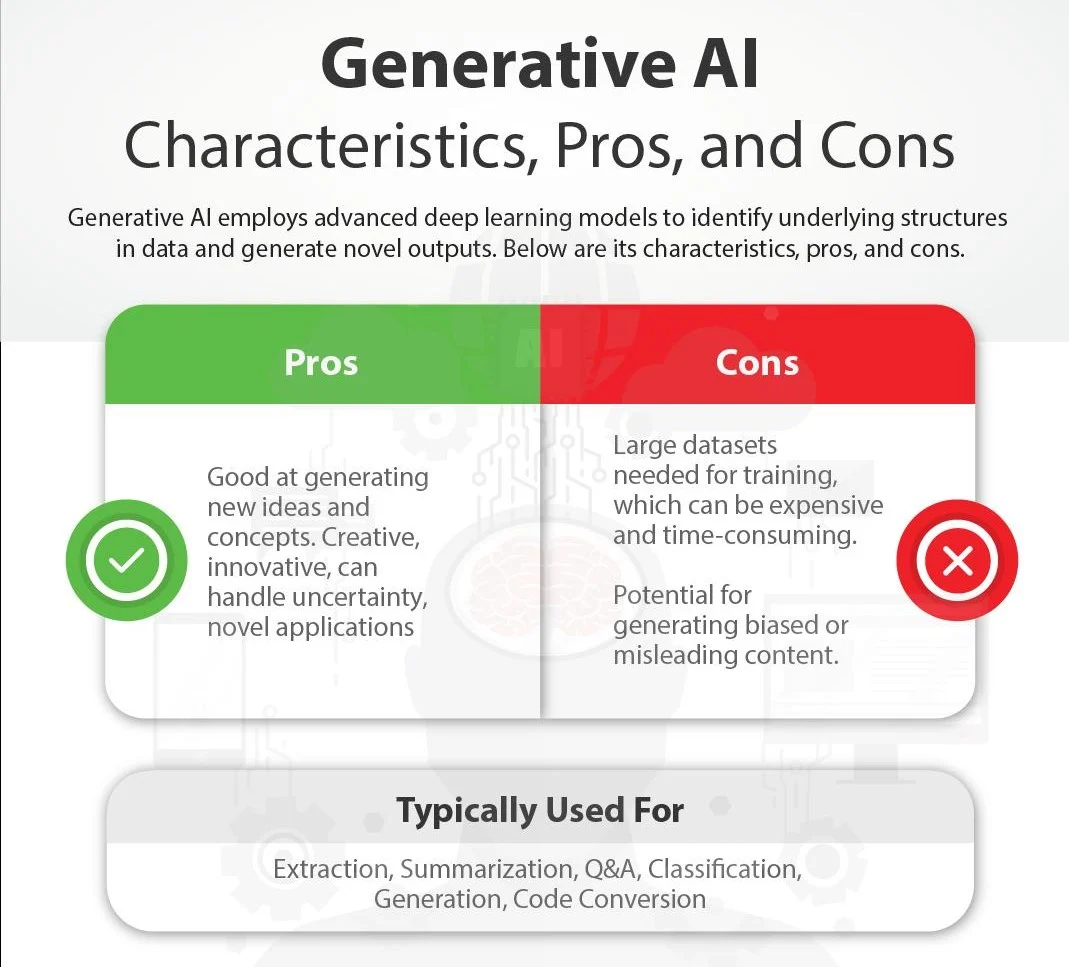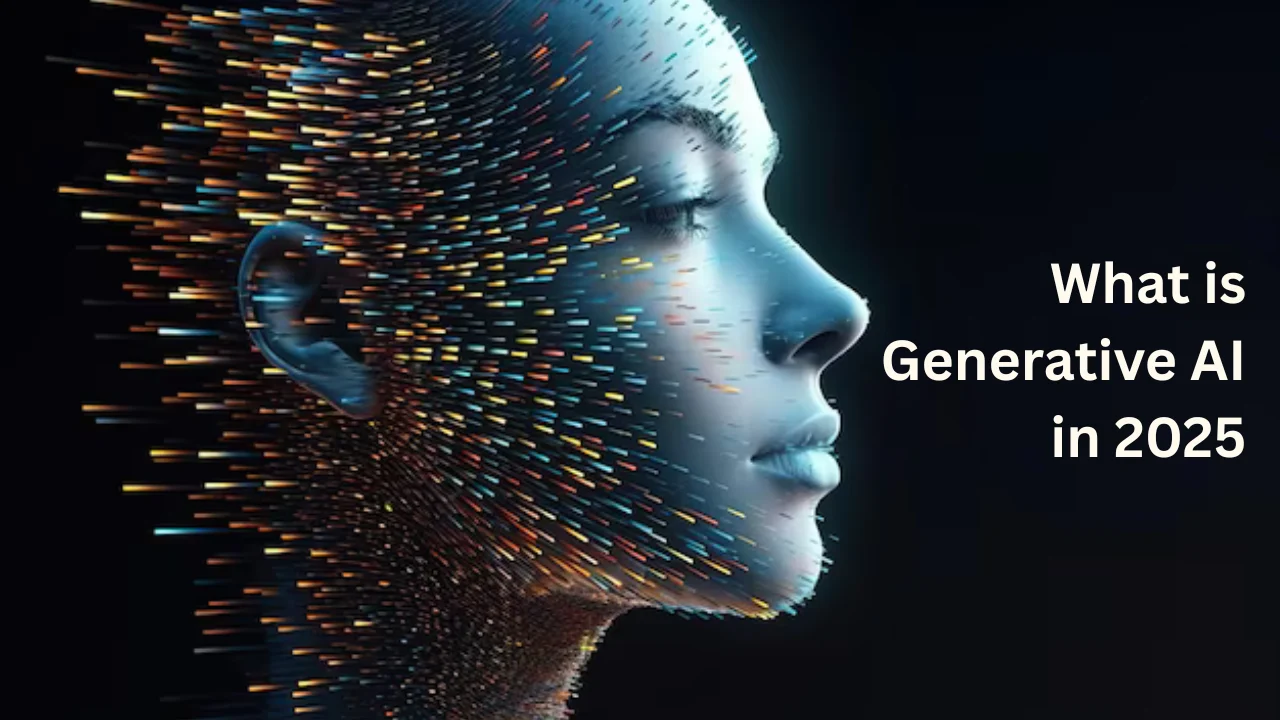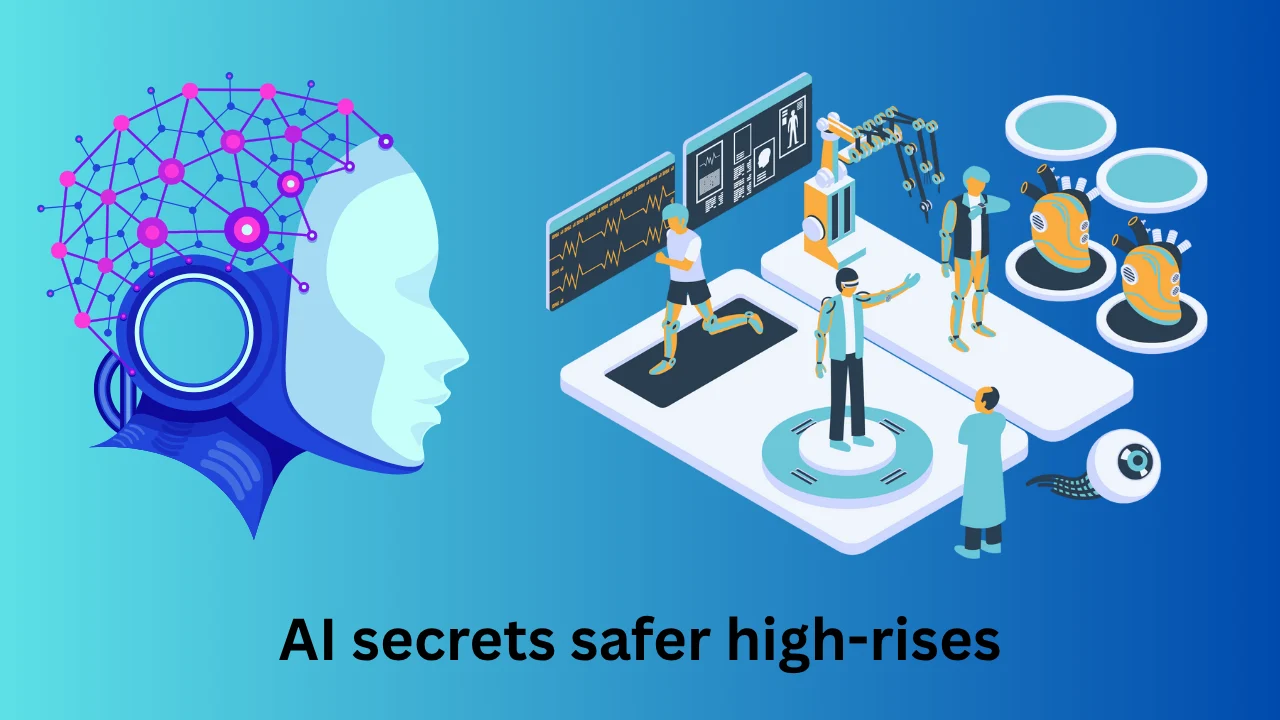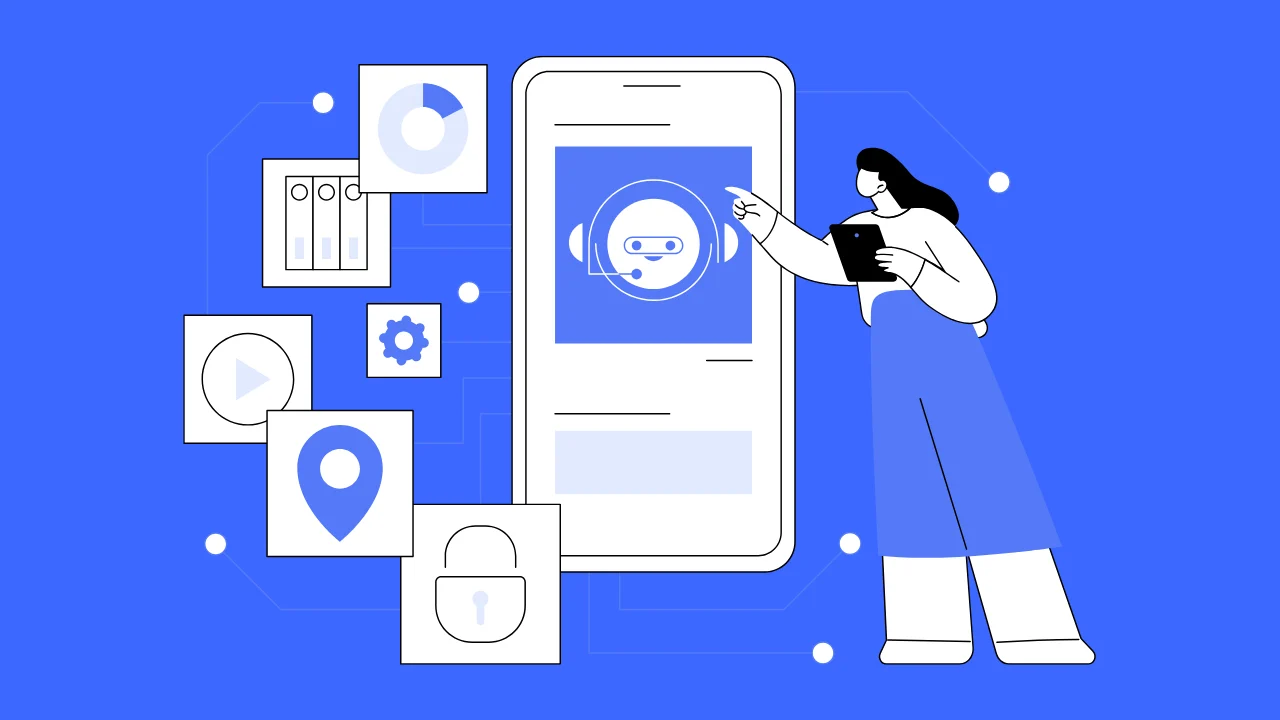Understanding the Buzz Around “What Is Generative AI 2025”
If you’ve ever wondered “what is generative AI 2025”, you’re not alone. Just like a conjurer pulling a rabbit out of a hat, generative AI seems to materialise complex content—from text and art to music and code—almost out of thin air. But let’s peel back the curtain and explore what this technological magic really means in 2025.
Generative AI today is not just a novelty; it’s influencing industries—from education, to healthcare, to entertainment—all the way to agriculture and finance. These systems are maturing from lab curiosities to trusted collaborators. With each update, they become more coherent, more creative, and more integral to our workflows. But the heart of the matter is: what changed by 2025? What exactly is the generative AI we’re talking about, and what makes it so different from the AIs of five years ago?
“Generative AI is rapidly becoming the stethoscope of the digital age—diagnosing problems and offering treatment paths in milliseconds.” — Dr. Ayo Banjo, Digital Health Expert
In this first section, we’ll set the foundation by defining generative AI (hello, generative AI definition) and sketching out its transformative path. After this, we’ll explore just how dramatically it’s evolved, and why in 2025 it’s a powerhouse of unprecedented capabilities. Ready? Let’s dive in.
Generative AI Definition – Cracking the Core Concept
When someone asks “what is generative AI 2025?”, the first essential stop is the generative AI definition. In simple terms, generative AI refers to a category of artificial intelligence systems that can produce new content. Think of it as a creative partner: training on vast datasets—books, articles, images, audio, video—and learning the patterns within. Armed with that knowledge, it can imaginatively generate fresh content that resembles but doesn’t replicate the training material.
In 2025, this concept has deepened in sophistication:
- Data ingestion at scale: Modern generative AIs in 2025 train on vast and diverse troves spanning text, images, and multimedia, to build multi-dimensional understanding.
- Creativity and coherence combined: Instead of mere randomness, they generate content that is meaningful, context-aware, and often impressively creative.
- Human-level fluency: Advanced systems like GPT-4T and Gemini Ultra produce text indistinguishable from human writing, even in style and emotional tone.
- Ethics-aware generation: Many platforms today include built‑in filters to reduce hallucinations, abuse and bias, while offering full auditability and traceability.
In essence, generative AI in 2025 is not just about reproducing patterns—it is genuinely co-creative, working alongside humans to invent, refine, and iterate. It’s about synergy between human intent and machine intelligence, redefining how content is crafted across sectors.
“Artists feared it. Now they use it. Generative AI is like having a 24/7 creative partner that never sleeps.” — Chuka Obasi, Nigerian Digital Illustrator
Evolution of Generative AI – From Early Days to 2025
Pre-2020 Generative AI Landscape
The roots of generative AI stretch back to early machine learning methods—statistical models and rule-based systems that could mimic language or simple image patterns. But these were limited. With the ushering in of Generative Adversarial Networks (GANs) around 2014 and Transformer architectures around 2017, a powerful foundation for creative machines emerged. This era gave us models like OpenAI’s GPT‑2 and GPT‑3, which could write paragraphs, generate code, or answer questions at a remarkable level.
“We gave AI a voice. Now we must teach it to speak responsibly.” — Mary Odinga, AI Policy Analyst
Breakthroughs and Acceleration (2020–2024)
Around 2020–2024, several transformative breakthroughs occurred:
- GPT‑3.5 and GPT‑4 introduced not just better quality but also better alignment through human feedback, making AI more trustworthy and less prone to hallucinations.
- Diffusion-based image models like DALL·E 2 and Stable Diffusion turned text prompts into detailed images.
- We saw early multimodal systems—those that could process text and visuals—emerging, such as GPT‑4’s image understanding capabilities and Google’s Imagen.
- Tool-augmented AIs became mainstream: bots that could search the web, calculate, design slides or debug code on the go—acting almost like intelligent personal assistants.
The 2025 Milestone
By 2025, generative AI has become ubiquitous and transformative:
- Ultra-large multimodal models (e.g., GPT‑4 Turbo with 1‑trillion parameters) can generate or summarise video, code, audio and text seamlessly.
- They now deeply integrate with services—so asking “summarise my last Zoom call and draft follow‑ups” is routine.
- Ethics frameworks have evolved: Bias detection, fairness assessment, and hallucination filters are built into most commercial models—raising the trust bar.
- Modular AI architectures allow firms to swap in secure, domain‑specific “micro‑models” underpinned by a central multimodal pipeline, enhancing safety and compliance.
In short, generative AI of 2025 is the result of a decade of architectural innovation, scaling breakthroughs, and embedding real‑world constraints—resulting in a creative engine that is powerful, responsible, and profoundly integrated.
How Generative AI Works in 2025
Transformer Models and Beyond
At the core, modern generative AI uses transformers—deep neural networks that model context and relationships in sequences of data. In 2025, we’ve gone several steps beyond:
- Mixture-of-Experts (MoE) architectures dynamically select sub-models during inference, balancing efficiency and quality.
- Sparse attention cuts down computation on long inputs, allowing processing of hour-long videos or entire data lakes at once.
- Continual adaptation layers enable the AI to update its understanding on-the-fly, adapting tone or domain within seconds of context changes.
Multimodal AI Systems
2025’s generative AIs aren’t just about words—they process and produce across modalities:
- Vision + Language: Capable of generating an image from text and then summarising key elements in a natural-language critique—or vice versa.
- Audio + Text: Create voice and background music tailored to mood and context—landing in podcasts, audiobooks, even guided therapy sessions.
- Code + Visualisation: Generate UI mockups and underlying code simultaneously—ideal for rapid prototyping.
These systems not only produce different types of content but also cross-check across them—leading to significantly better coherence and alignment.
Reinforcement Learning with Human Feedback (RLHF)
RLHF remains a cornerstone for refining AI behaviour. By collecting feedback from real users—and sometimes expert annotators—models learn:
- Which responses are helpful or harmful
- Tone, style, domain-specific appropriateness
- Ethical constraints—like avoiding misinformation, hate speech or privacy infringements
In 2025, such feedback loops happen continuously in production, ensuring models adapt rapidly to new norms and evolving world events.
🔍 Table 1: Key Generative AI Tools in 2025
| Tool Name | Type | Use Case | Website |
|---|---|---|---|
| GPT-4 Turbo | Text Generation | Writing, summarising, code | openai.com |
| Midjourney V6 | Image Generation | Creative visuals, concept art | midjourney.com |
| Runway Gen-1 Pro | Video Generation | Short films, ad creatives | runwayml.com |
| Descript Overdub 3 | Audio Generation | Podcasts, audio dubs | descript.com |
| Kaedim AI | 3D Modelling | Game assets, virtual environments | kaedim3d.com |
Major Generative AI Tools and Platforms in 2025
Text Generation – Chatbots and Assistants
Several leading services now integrate generative AI into daily workflows:
- OpenAI’s GPT‑4 Turbo: Superb at drafting business emails, technical documentation, and even legal summaries.
- Anthropic’s Claude 3 Opus: Known for civility, it is widely adopted in enterprise to assist with policy, finance, and HR tasks.
- Google Bard 4: Advances multimodal reasoning, contextualising answers with web updates in real‑time.
These systems can now act as brainstorming buddies, code debuggers, or even relationship coaches—within privacy guardrails.
Image & Art Creation – Stable Diffusion, DALL·E 3
Image tools in 2025 are jaw-dropping:
- DALL·E 3 generates illustrations or graphs from detailed text—like “a minimalist vector infographic showing global water scarcity trends.”
- Stable Diffusion XL offers edit-on-image capabilities: “Make her shirt neon orange” or “convert this day scene to rainy night.”
- Midjourney 6 focuses on stylised visuals, widely used in concept design for gaming or film.
Audio, Video, and 3D Content Tools
Generative AI doesn’t stop at static content:
- Runway Gen‑1 Pro can take a script line-by-line and produce custom videos—with matching visuals, voice, and subtitles.
- Descript Overdub 3 produces custom voices for podcast intros, seamlessly mimicking tone and emphasis.
- Kaedim AI can transform a 2D concept art into a rigged 3D model for games or VR environments in mere minutes.
In fact, it’s little wonder that a question like “what is generative AI 2025” leads us into a realm where AI not only writes words but designs entire worlds.
Use Cases of Generative AI Across Industries
Healthcare: Diagnosis, Drug Discovery & Mental Health
In the medical world, generative AI is saving lives, not just time. By generating synthetic data, it helps in:
- Training diagnostic models where real patient data is scarce.
- Simulating molecular structures for faster drug discovery.
- Chat-based therapy tools offering 24/7 mental health support.
📈 Table 3: Use Cases of Generative AI by Industry
| Industry | Application Example | Tool/Platform |
|---|---|---|
| Healthcare | Drug discovery simulations | IBM Watson |
| Education | AI tutors for customised learning | Khanmigo |
| Marketing | SEO-optimised ad campaigns | Jasper.ai |
| Entertainment | AI-generated scripts and concept art | Sudowrite |
| Software Dev | UI + code generation from sketches | Builder.ai |
For example, platforms like IBM Watson Health are leveraging generative AI to accelerate drug trials and identify side effects before human trials even begin.
“AI can reduce drug development time by over 30%—this could revolutionise the pharmaceutical industry.” – McKinsey & Company
Education: Personalised Learning and Tutoring
With platforms like Khanmigo by Khan Academy, generative AI acts as a personal tutor. It helps students:
- Learn at their own pace with AI-generated exercises.
- Get contextual feedback on essays or problem-solving.
- Understand complex ideas via interactive visual explanations.
Educators also benefit. AI generates lesson plans, adapts materials to learning styles, and even helps grade papers.
“AI in education empowers teachers to focus on what truly matters—student growth.” – EdTech Magazine
Business and Marketing: Content, Copy, and Campaigns
Whether you’re a solo entrepreneur or Fortune 500 exec, AI tools like Copy.ai, Jasper, and Writesonic make content creation a breeze. Businesses use them for:
- Ad campaign ideation and A/B testing.
- SEO-optimised blog posts at scale.
- Personalised email outreach based on customer personas.
AI doesn’t just create content; it measures performance and refines messaging based on analytics.
“Brands that use generative AI in content production cut their costs by 40% on average.” – Forbes 2024 Report
Entertainment & Media: Scriptwriting, Music, and Gaming
Hollywood is already dancing to the rhythm of generative AI:
- Scriptwriters use tools like Sudowrite to brainstorm characters and plot arcs.
- Musicians remix or generate beats using Amper Music.
- Gamers play in worlds built dynamically by Scenario, an AI art generator for game assets.
Even major studios are experimenting with “AI-first” projects where characters, dialogue, and even shots are produced with minimal human intervention.
📊 Table 2: Pros vs Cons of Generative AI
| Pros | Cons |
|---|---|
| Boosts productivity across sectors | Can generate false or misleading information |
| Enables creative breakthroughs | Raises copyright and ownership concerns |
| Reduces costs of content and communication | May replace human jobs in content creation |
| Enhances accessibility for the disabled | Potential for misuse (e.g., deepfakes) |
| Customisable to user or enterprise needs | Requires constant human oversight |
The Challenges of Generative AI in 2025

Hallucinations and Misinformation
Despite advancements, generative AI still suffers from hallucinations—fabricated facts that seem convincing. While hallucination detection tools like Giant Language Model Test Room exist, no system is foolproof yet.
When AIs write confidently about fake laws, made-up quotes, or incorrect statistics, the consequences can be dire—especially in healthcare, law, or finance.
Copyright and Ownership Issues
With AI generating original-like art and text, who owns the output?
- Is it the tool’s developer?
- The user who typed the prompt?
- Or the creators whose data the model was trained on?
These questions have sparked lawsuits across music, art, and even software industries. Regulatory clarity is still lagging behind the tech curve.
Ethical and Societal Risks
Bias, discrimination, and abuse of power remain central concerns:
- AI can amplify stereotypes if trained on biased data.
- It can be weaponised to create deepfakes or disinformation.
- Over-dependence on AI might marginalise certain professions or creative voices.
Tools like Hugging Face’s Bias Explorer aim to combat these risks—but societal vigilance is just as crucial.
Advantages and Disadvantages of Generative AI
Pros of Generative AI
- Speed & Scalability: Create marketing campaigns, product manuals, or art assets in minutes.
- Creativity Boost: Jumpstart ideas and overcome writer’s block.
- Multilingual Capabilities: Translate and localise content globally.
- Accessibility: Assistive tools for people with disabilities.
- Cost Reduction: Cut expenses for small businesses or educators.
Cons of Generative AI
- Dependence: May erode original thinking or creativity.
- Quality Control: Risk of publishing incorrect or offensive content.
- Job Displacement: Some roles—especially entry-level writers or designers—are being automated.
- Privacy: Generative AI systems sometimes memorise sensitive data.
Regulatory Landscape in 2025
The AI policy world has finally caught up. In 2025:
- The EU AI Act enforces transparency, risk classification, and ethical audits.
- The U.S. AI Bill of Rights mandates fairness, explainability, and opt-out rights for consumers.
- Several nations now require AI disclosures on generated content, akin to “Sponsored Content” tags.
Governance bodies are evolving just as rapidly as the technology—balancing innovation with responsibility.
The Future of Generative AI: What to Expect
By 2026 and beyond, expect:
- Hyper-personalised AIs: Trained on your life, tone, and style.
- Real-time AI companions: Think Siri meets Jarvis from Iron Man.
- Embedded AI in smart glasses, hearing aids, and implants.
- Generative AI for governance: Drafting laws or simulating economic policies.
We’re at the beginning of a long, magical ride. Generative AI in 2025 is just a hint of what’s to come—if we steer it right.
Conclusion: In the Future, Looking Ahead
So, what is generative AI 2025? It’s not just smarter text or prettier pictures—it’s a revolution in how we think, create, and interact. It’s our creative sidekick, our brainstorming buddy, and sometimes our ethical mirror. With power comes responsibility, and while the tools dazzle, it’s up to us to ensure they serve us wisely.
From medicine to media, education to enterprise, generative AI is shaping the landscape of human achievement. The future is co-authored—by humans and machines.
FAQs
How does generative AI work in 2025?
Generative AI in 2025 uses large transformer-based models capable of handling text, images, audio, and video, guided by human feedback and ethical guardrails.
What industries are most impacted by generative AI in 2025?
Healthcare, education, media, marketing, and software development are leading sectors seeing massive transformation due to generative AI.
Can generative AI be trusted in critical tasks like medicine or law?
It depends on the tool and use-case. While AI can assist with research and drafting, expert oversight remains vital.
Is generative AI replacing human jobs?
In some roles, yes. But it also creates new opportunities—especially for creatives, data specialists, and AI trainers.
What are the top generative AI tools in 2025?
GPT‑4 Turbo, Claude 3 Opus, Bard 4, Midjourney 6, and Runway Gen‑1 Pro are among the most popular in text, art, and video generation.
What ethical concerns exist around generative AI?
Bias, misinformation, deepfakes, copyright infringement, and privacy risks are key ethical challenges that developers and users must manage.






